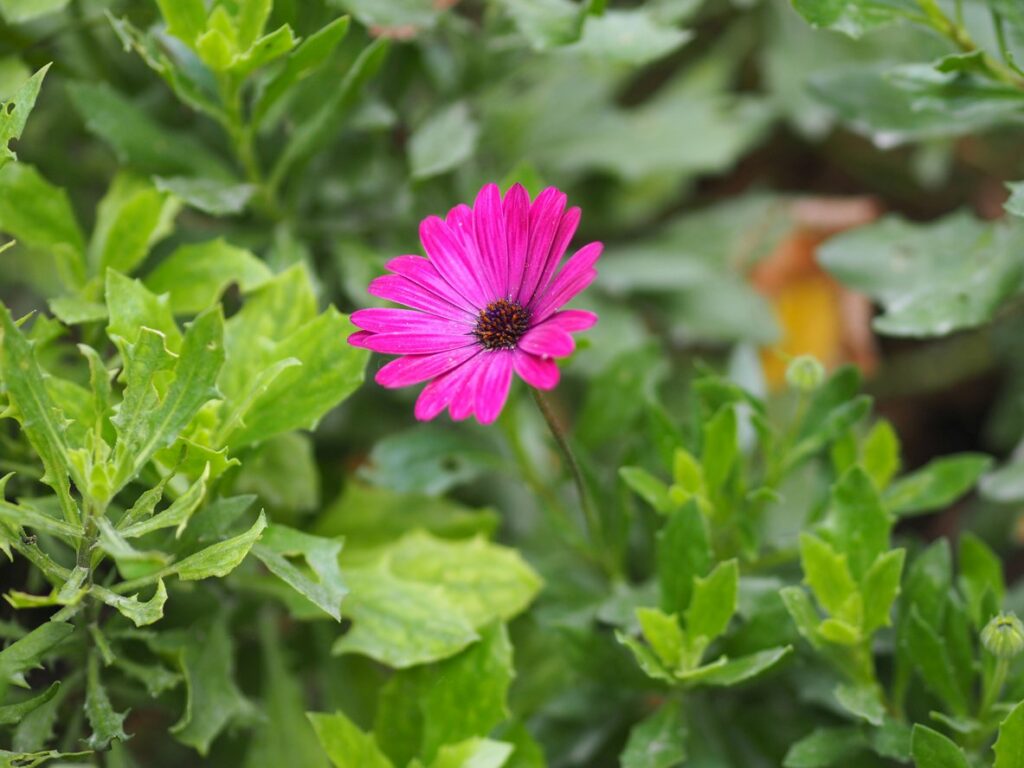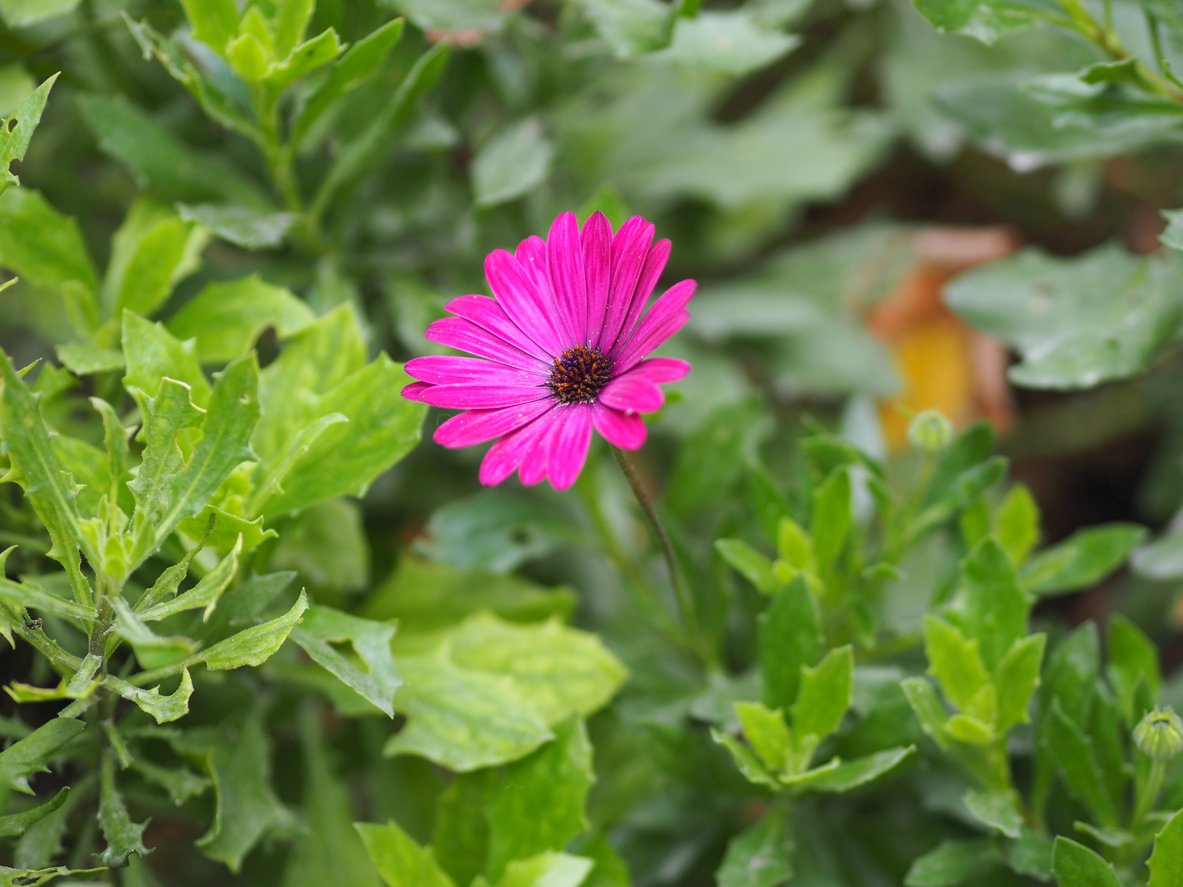The Painted Daisy Plant – Growing And Care For Pyrethrum
If you like daisies, then you’re going to love the painted daisy. A perennial that comes in various colors from red to yellow, pink, and violet, the painted daisy lives up to its name. But it’s not just another beautiful flowering plant to grow in your garden. It has its uses as an insecticide as well.

But what really makes the painted daisy a valuable addition to your flowering beds is that it goes well with a wide variety of other flowers. From the famous aster and daylily to beebalm and blanketflower, this herbaceous perennial brings a depth of color and cheerfulness to your butterfly garden. This article walks you through the different varieties of the painted daisy, how to grow it, and what it takes to keep it blooming successfully in your garden year after year.
What is the Painted Daisy Plant
Since you’ll be growing the painted daisy (Tanacetum coccineum) along with other flowering plants, you need to know when it blooms. Luckily, this perennial has one of the longest blooming seasons among all daisies. The flowers open up some time in the late spring and keep blooming until late in the fall.
The flowers usually grow on top of tall and sturdy stalks with tiny leaves which make them ideal for floral arrangements. But that’s not the only use for it. As a herbaceous perennial that belongs to the Asteraceae family, it is packed with natural pyrethrins which you can use as a pesticide. Gardeners often dry the flowers, grind them into powder and mix the powder with water. It’s milder than commercial pesticides, but still effective nonetheless.
The colorful flowers are about 3 inches wide that bloom on top of fern-like and feathery blue-green leaves. Even if you’re not a fan of cut flowers, the painted daisy is an alluring sight in the butterfly garden.
It has USDA hardiness zones between 2 and 10. However, as a perennial, it can only survive in zones between 3 and 7. Outside of that, people grow it as an annual. It goes by many other names including pyrethrum, Persian insect flower, and Persian pellitory. The painted daisy hails from central Asia but thanks to its high tolerance to different weather conditions, it has spread all over the world.
Painted Daisy Varieties
Since variety is the spice of life, it doesn’t make sense to have one cultivar of the same species and grow it every time. The painted daisy has many varieties that tolerate different conditions and some are more disease-tolerant than others. Here are the most common varieties.
- Brenda: A delicate daisy with slender magenta petals and a yellow center. The flowers are as showy as they come. The mature cultivar reaches about 24 inches high and has bluish-green soft leaves. It has hardiness zones between 3 and 7 so you can easily grow it as a perennial.
- Golden Tansy: It was the yellow foliage that gave this cultivar its name rather than the flowers themselves. That tells you something about the Golden Tansy. Most people grow it for its golden foliage rather than the tiny yellow clusters of flowers. So consider cutting the flowers in the summer to keep the foliage looking lush and golden. It reaches about 30 inches high and has hardiness zones between 4 and 9.
- Double Feverfew: A tall cultivar that was developed from the feverfew species. It blooms all summer and the clusters of flowers are usually white with yellow centers. The plant grows to about 2 feet making it a giant among daisies. It has hardiness zones between 4 and 9 as well.
- Tansy: A hardy perennial that grows in most soil types and can even grow well in partial shade. However, like most daisies, it prefers full sun. It has deep green leaves and blooms tiny yellow flowers in mid-summer. It’s hardly a suitable cut flower, but the 3-foot tall combination of foliage and flowers make for a beautiful sight. It has hardiness zones between 4 and 9.
- Feverfew: Another daisy giant that grows to 2 feet tall. The flowers are typical daisies with white petals and yellow centers. It is often grown as a perennial.
How to Grow the Painted Daisy
The thing about the painted daisy is you can grow it in many ways. You can start it from seeds, use a cutting, or divide the grown plant. Keep in mind that dividing is a necessary step to keep the plant growing successfully after a few years. Here we’ll focus on growing the painted daisy from seeds in easy steps.
- Make sure to get your seeds from a reputable source.
- Give the seeds the water test. Dump them in a bowl full of water and wait for an hour. Get rid of the seeds that float since they won’t germinate.
- Start the seeds indoors about 8 weeks before the last frost.
- Select a small terracotta pot or a plastic container and make sure it has plenty of drainage holes at the bottom.
- Fill the pot with a rich potting mix until about 2 inches from the edge.
- Plant about 3 to 4 seeds in each pot. You’ll thin them out later.
- Plant each seed about a quarter-inch into the soil and cover back with loose soil.
- Water the pot enough to get the soil moist without overwatering it. Keep the pot in a warm and moderately lit place.
- When the seedlings are about 3 inches high, thin them out. If you plan to move the plants out to the garden, then you can keep two seedlings in each pot.
- When the weather improves outside, you can transport the seedlings to their permanent place in the garden.
- Break the topsoil and mix in a generous portion of compost and organic materials.
- Dig out each seedling with a clump of soil around the rootball and place it in a hole in the flower bed. Fill back the hole with soil and pack it to push out air pockets.
- Water the plants to help the soil settle.
Painted Daisy Care
It can be a little hassle to move the painted daisy plants between indoors and outdoors, but once they’re growing outside, they’re easy to care for. Pruning and pests and diseases are usually the two main concerns for this herbaceous perennial.
Light
You might have noticed that we stressed the hardiness zones of each cultivar we mentioned above. That’s because the light requirements of each cultivar vary depending on their hardiness zones. If your cultivar grows between zones 3 to 7, you can safely plant it in a sunny area that gets the full sun. But outside of that, the afternoon sun can damage the leaves, which in some varieties are more important than the flowers. So make sure it gets either partial shade or dappled light to cut through the intense sun.
Soil
The best type of soil for the painted dais is a slightly acidic sandy type. As long as the soil is well-drained, you can grow your perennials without issues. If your garden soil is too heavy for this daisy, you can add sand to give it the right texture and acidity for the roots to penetrate. Make sure the pH levels are between 5.2 and 7 which is easy to achieve. Weeds tend to be a problem for the daisy, so use a thick layer of mulch to prevent weeds and keep the soil moist. Usually, shredded leaves, pine needles, or bark will do.
Water
You should always strive to keep the soil moist without overwatering it. When you irrigate the painted daisy, don’t water the leaves since that’s the main cause of fungal infestations. Aim the water to the roots with either a hose or a drip irrigation system. Water the plant whenever the soil goes dry. In the summer months, it will need more frequent irrigation. However, once the plant matures, it can get some moisture from the soil making it more drought-tolerant.
Fertilizer
Besides the mulch you cover the soil with, you can also apply a custom fertilizer. Usually, a 5-10-5 fertilizer gives the plant the right amount of nutrition it needs. Apply the slow-release fertilizer once a year in the early spring. Organic compost is also necessary for lush green foliage and rich blooms. Keep a few weeks apart between the fertilizer and the compost applications.
Pruning
As a perennial, the painted daisy needs extra care in areas that witness a harsh winter and frost. After the first frost of the fall, you should cut back the foliage to preserve the plant’s energy. To protect the root system, consider using a thick layer of mulch around the base of the plant. When the weather improves in the spring, you can remove the mulch.
As for pruning, you need to remove the dead flowers and cut the whole stalk to encourage the plant to grow more blooms. Some gardeners have issues with blooming. Trim the plant a little to trigger new growth including flowers.
Pests and Diseases
Pests seem to favor the painted daisy. It’s not just good bugs such as bees and butterflies that flock to these perennials. Aphids, thrips, spider mites, and leafhoppers all feed on the leaves and stems. You should get rid of them before they become a real problem. Consider using neem oil or a swab soaked in alcohol to eliminate these pests.
The most common diseases you have to deal with are the following.
- Botrytis cinerea: A fungal infection often caused by water on the leaves and lack of air circulation. The problem with this infection is that it’s hard to treat it. The gray spots on the leaves ruin the foliage. So get rid of the infected leaves and improve the air ventilation around the plants.
- Fasciation: Known as cresting, this is a bacterial disease that affects the flowers in a weird way. Instead of the usual circular center, the heart of the flower becomes elongated. The stems also become flat and look like ribbons. Otherwise, the disease doesn’t cause much damage to the plant and it is not lethal.
- Powdery Mildew: Many garden plants get this fungal infection. It appears as a whitish powder on the surface of the leaves. Most often caused by high levels of humidity and water covering the leaves. Treat it with neem oil or just get rid of the infected parts to prevent the spread of the disease.
